Monasteries in Romania, where amazing frescoes are not inside, but outside
Categories: Design and Architecture
By Pictolic https://pictolic.com/article/monasteries-in-romania-where-amazing-frescoes-are-not-inside-but-outside.htmlSurely, if you go to visit a monastery, you expect to see frescoes there — but inside. There are several monasteries in Romania that are many hundreds of years old, and their main churches — the kafolikons — are painted on the outside with beautifully preserved frescoes. Considering the technology of creating frescoes, it is surprising that this design of the external walls has not suffered from time or weather conditions. Perhaps the most famous of these monasteries is Voronets, where the azure—blue background of frescoes even gave the name to such a shade in Romanian.
(30 photos in total)
 Source: Kuriositas
Source: Kuriositas

The number of frescoes on the walls of the kafolicon of the Voronets monastery can turn your head. Each fragment of the wall is dedicated to a specific biblical story. The western side depicts the Day of Judgment. The northern side tells about the events from the Book of Genesis, and the southern wall depicts the family trees of the characters of the Old Testament. For all the time, the frescoes have never been restored. The paint layer is only a few millimeters, and despite this, all the plots are clearly distinguishable.

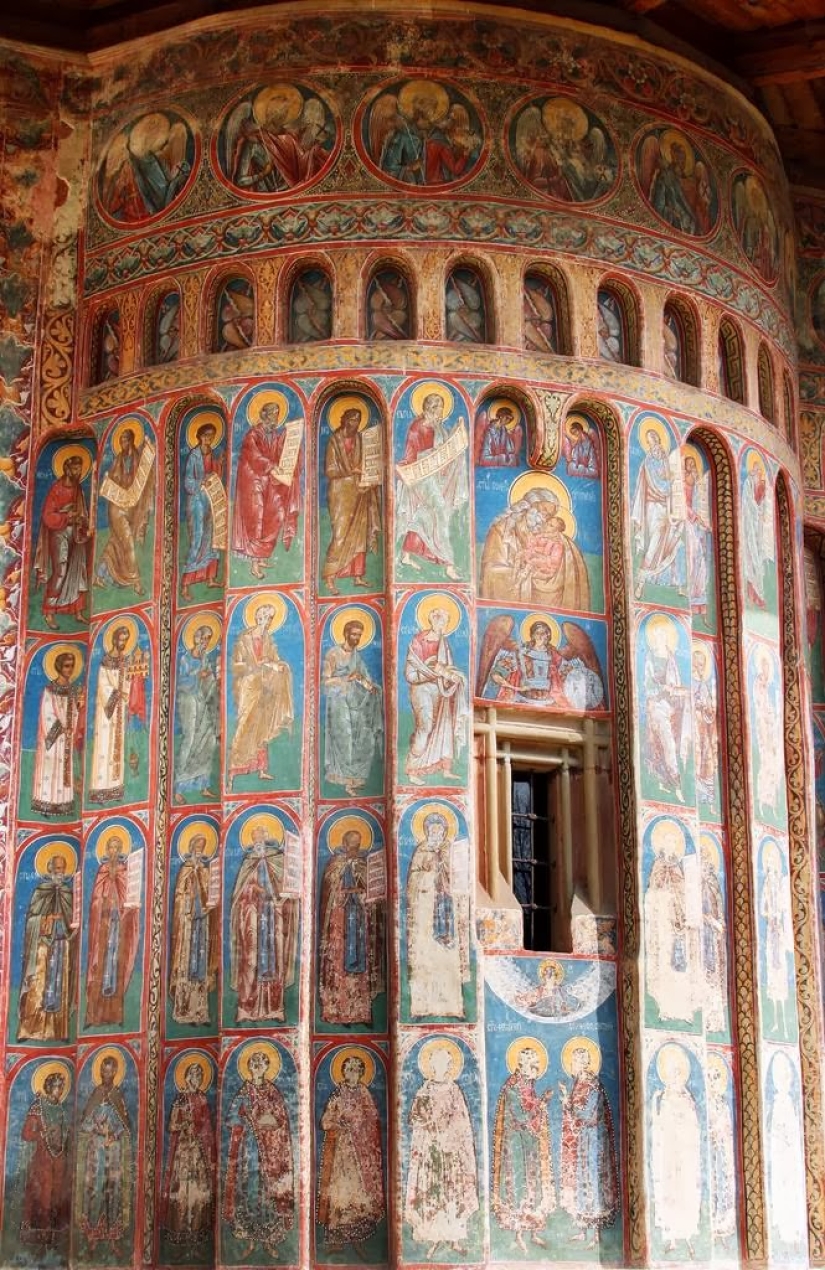


It is not known exactly when these frescoes were created, but the monastery itself began to be built in 1488 by order of the ruler of the Moldavian Principality Stephen III the Great, who wanted to celebrate the victory in a recent battle with the troops of the Ottoman Empire. The time of the monastery's construction coincides with the arrival of St. Daniel the Hermit, who was its first abbot and is buried inside.



The frescoes are amazing in their beauty. When the Habsburgs annexed the northern part of the Moldavian Principality in 1775, the monastery was abandoned, and the monks did not return here until the 1990s. How the frescoes managed to be so well preserved, despite the desolation, still remains a mystery: some believe that this is one of the manifestations of a divine miracle. Voronets is often called the Sistine Chapel of the East.



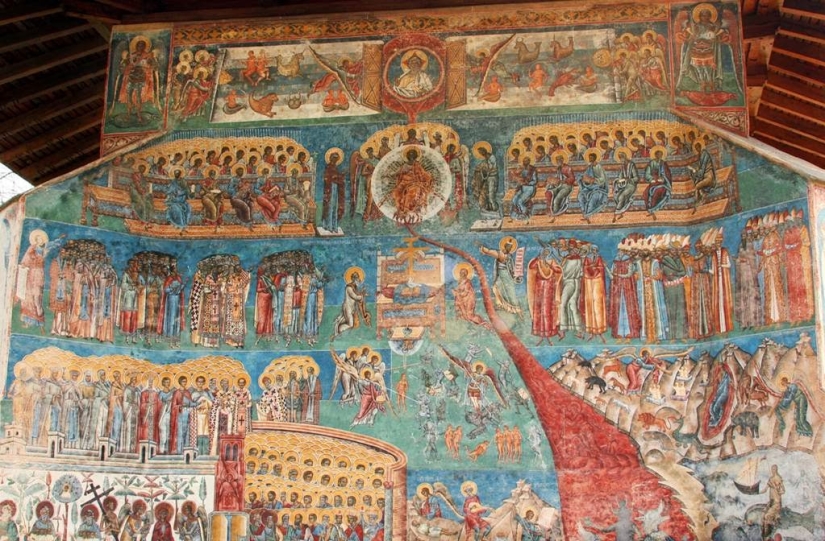

Voronets is not the only monastery in Romania whose walls are painted with frescoes from the outside. There are other, less well-known examples that are part of the unique cultural heritage of this country. The monastery of Khumor is also dotted with frescoes outside. They are not as well preserved as in the Voronets Monastery, but they still look fascinating. Humor was built in 1530, abandoned in 1786 and, like Voronets, was not used until the end of the XX century.


Unlike Voronets, the authorship and the period of creation of frescoes in Humora are known. Thomas Suceava chose the dominant red-brown shade for his project and supervised the painting of the monastery in 1535. He took subjects from the Bible, including Judgment Day, and also created a visual ode to the Virgin Mary. However, among his works is an image of the siege of Constantinople, which was a propaganda tool against the Ottoman Empire, which was experiencing a golden age when frescoes were created. Let this particular siege of Constantinople take place in 626 AD and the Persians were the occupiers, the Turks are depicted on the fresco instead of them.
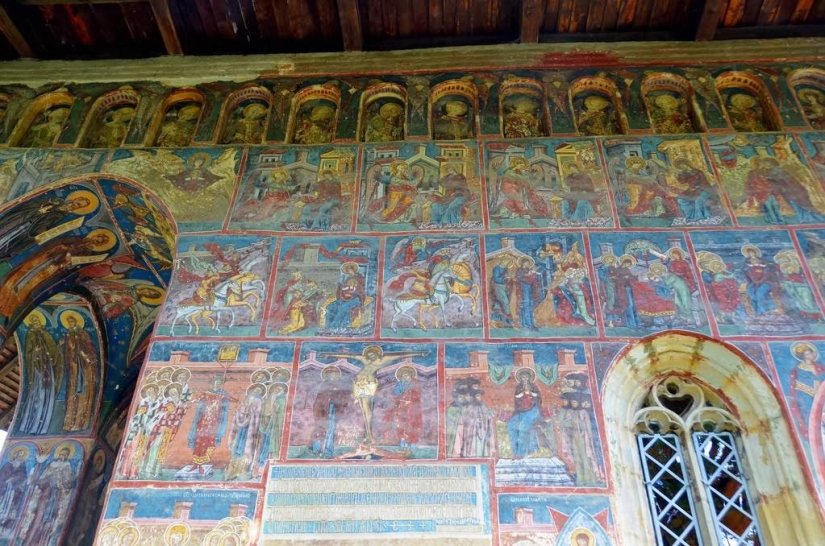


The Moldovica Monastery was built in 1532 as a symbolic protective barrier against the Turks. It was built by voivode Peter Raresh, the illegitimate son of Stephen III the Great (the one who ordered the construction of Voronets).

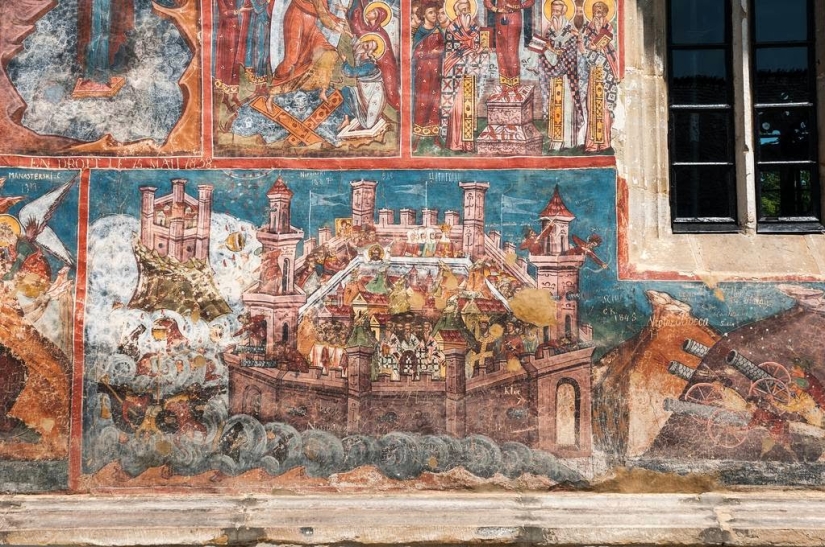
Raresh was a Turkish vassal who inherited from his father a love for the construction of religious buildings. During his reign, the country was going through difficult times, and in 1539 he even lost the throne for two years. Moldovica is one of his best achievements during his reign.


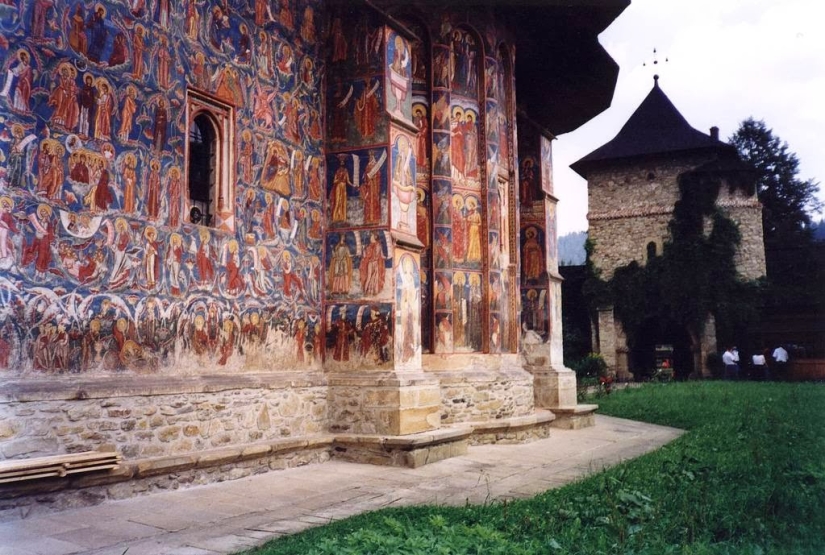
In the 1500s, a lot of money was invested throughout the country in the construction of temples and monasteries. In 1585, the Sucevitsa Monastery was built, the outer walls of which were also decorated with frescoes. Like the rest of the monasteries, Sucevica combines elements of Byzantine and Gothic architecture, and frescoes use scenes from the Old and New Testaments. It was probably the last monastery decorated in this way. The frescoes date from the beginning of the XVII century. Sucevitsa differs from other monasteries in that not only monks, but also nobles lived here.



Sucevitsa is a mysterious place. The western wall of the monastery is not painted. According to a local legend, an artist engaged in painting fell from the scaffolding and crashed to his death. Other artists who worked on the frescoes considered this a bad sign and were afraid to continue working. So the painting of the outside of the walls remained unfinished. There are no other legends explaining the absence of frescoes on the western wall, so it remains to believe in the veracity of this one.


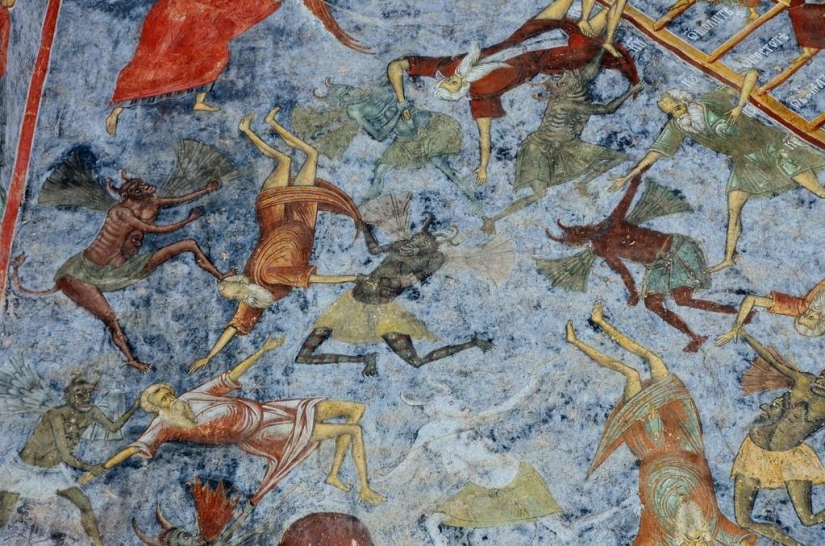
The Sucevica Monastery has never been abandoned, but there is a period of relative lack of activity in its history. Under communism in 1947-1989, only nuns over the age of 50 were allowed to live here. After the coup in Romania in 1989, the monastery began to flourish again.
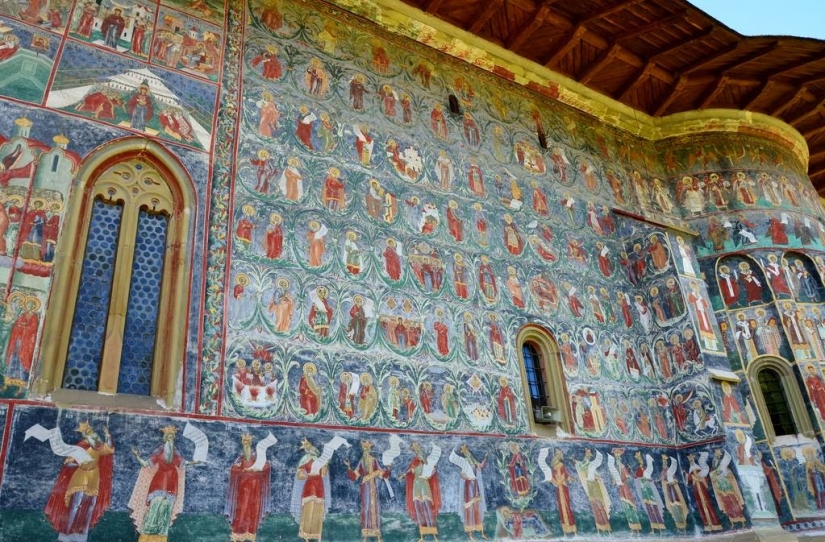
Despite its status as UNESCO cultural heritage sites, Romanian painted monasteries are little known outside of this country. This is an amazing example of how art has been preserved for centuries, and a significant contribution to Romanian and European history.
Keywords: Monastery | Painting | Romania | Shrines | Frescoes
Post News ArticleRecent articles

New York artist Trina Merry paints very unusual paintings. The canvas for her creations are the naked bodies of models, which she ...

Stefan Ackermann (Stefan Ackermann) - the eccentric lead singer of the German band "Das Ich", playing in the styles of darkwave, ...
Related articles

Colin and Kristin Poole are an amazing creative family. Colin is a world-renowned artist, and his wife Kristin is a wonderful ...

We used to accuse modern art in unprincipled and addiction to pornography. But whether innocent old classic paintings that are dear ...

Is it possible to use classical painting techniques, reflecting modern realities? What does a panic look like? Is it possible to ...

We often hear that age is just a number on a passport. Many take this as little more than a consolation, but there are those for ...